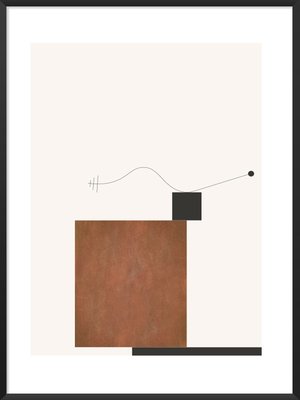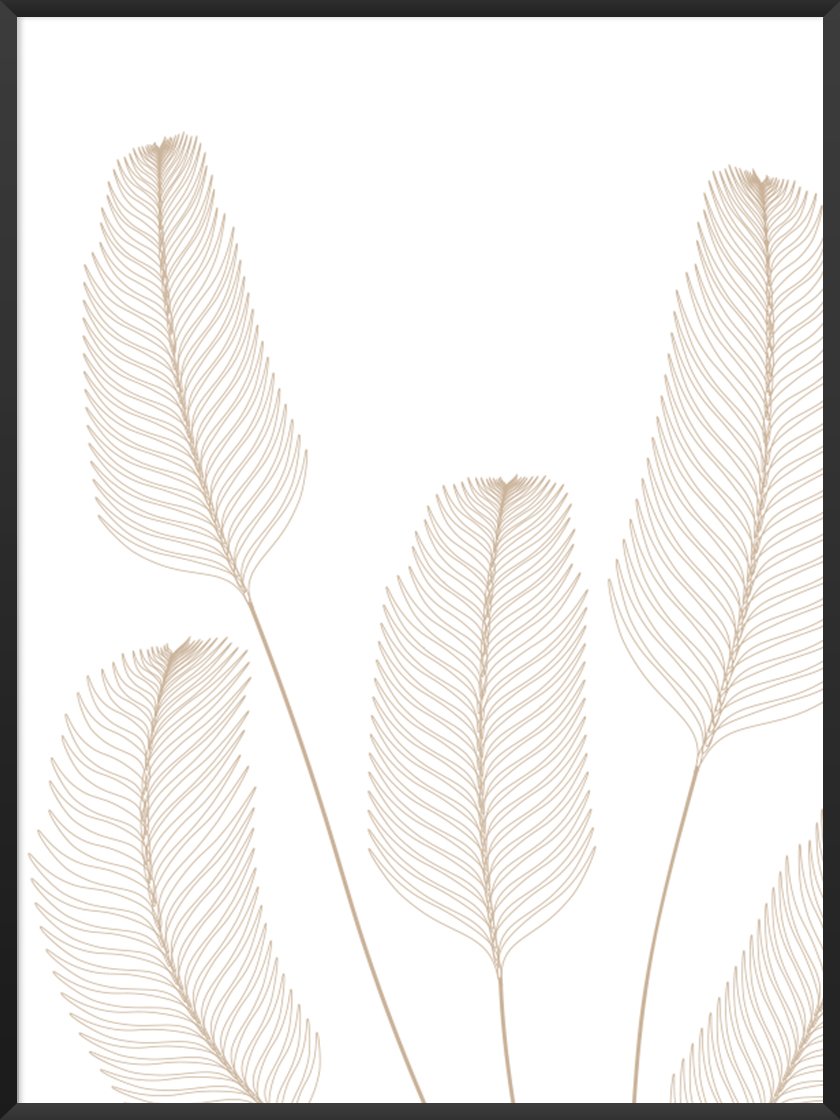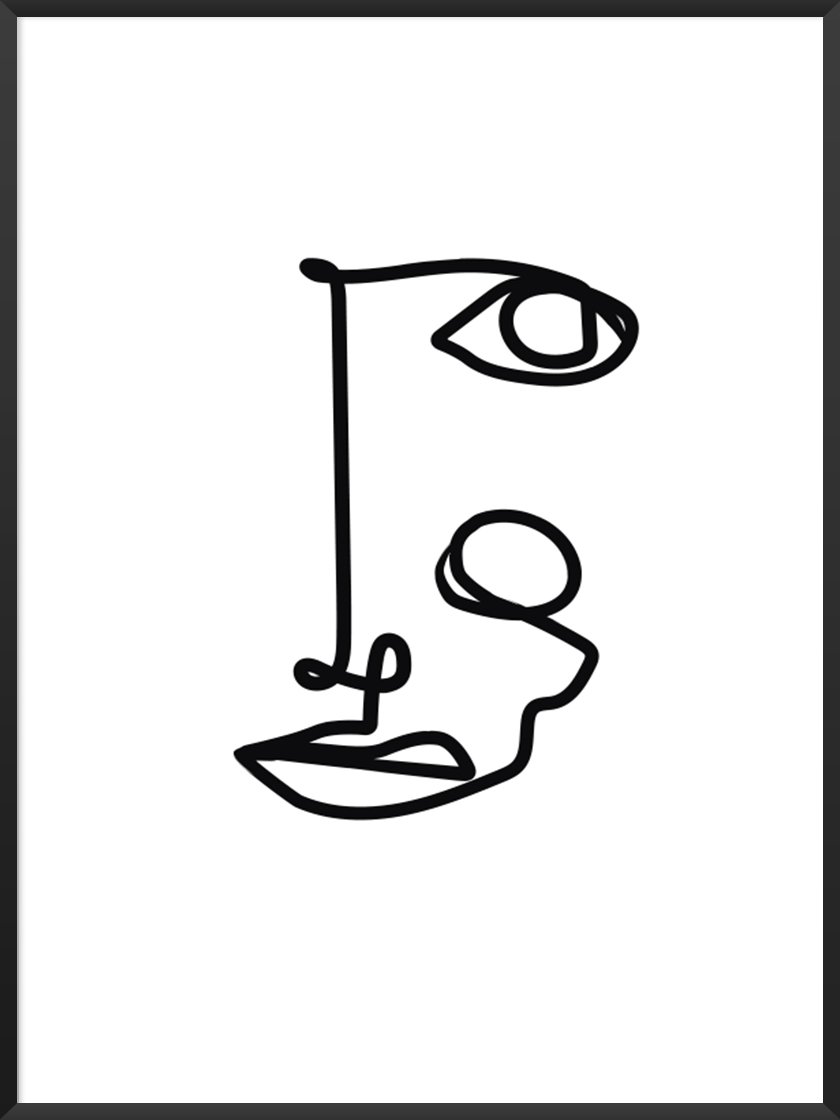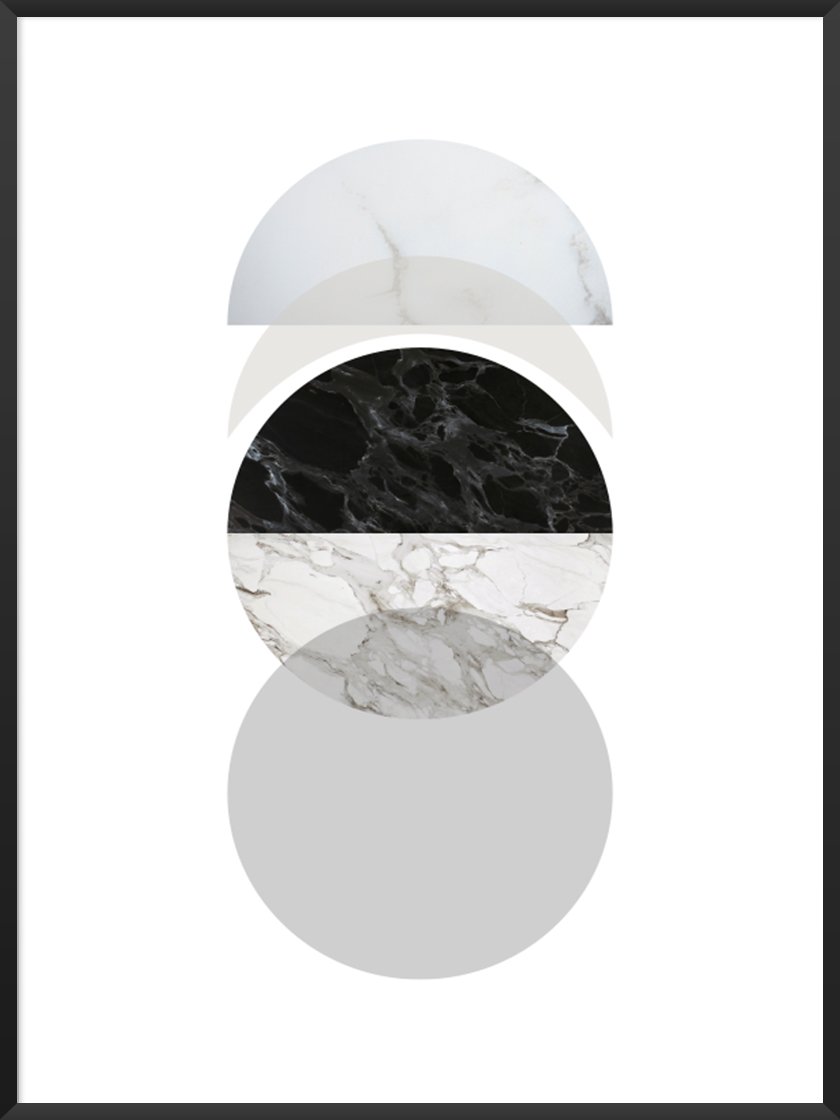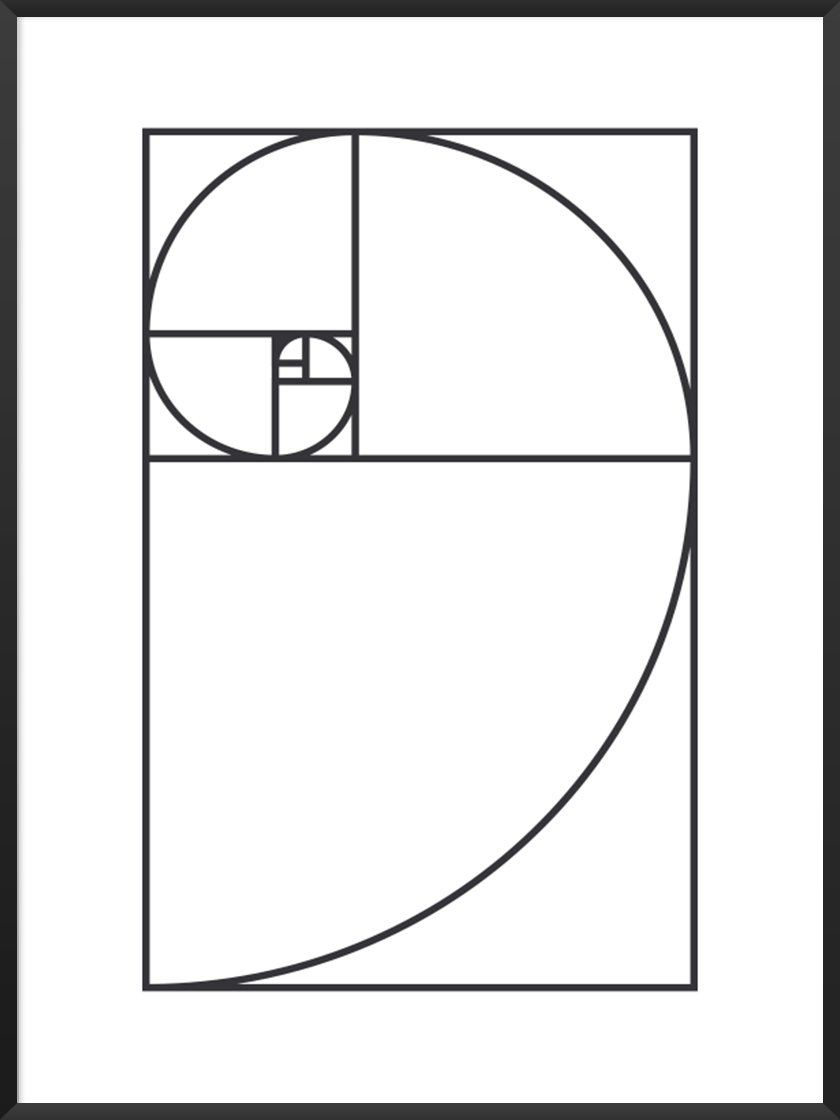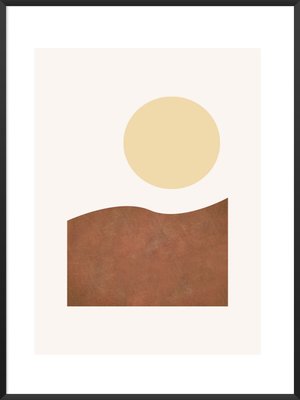Spotlight on Scandinavian Interiors: All Your Questions Answered
Scandinavian interiors as we know them today emerged from a wider societal change in viewpoint, shortly after World War II. Rather than gorgeous, functional products only being accessible to the rich - this shift in viewpoint (of a more socially democratic nature) was the driving force behind them being available to everyone, regardless of their socioeconomic status.
Scandinavia as a whole is considered as Denmark, Norway, and Sweden. There's some debate over whether Finland and Iceland also count - but we're not here to dispute geography, we're here for Scandinavian interiors.
WHAT MAKES A SCANDINAVIAN INTERIOR?
ELEMENTS OF SCANDINAVIAN INTERIOR DESIGN
Scandinavian interiors are usually defined as more muted and neutral pastel colours, natural materials (such as wood), and being very considerate in regards to form as well as function. The furniture you put in your home should be well designed and useful, as well as beautiful.
COLOUR: THE BASE OF A SCANDINAVIAN INTERIOR
When it comes to Scandinavian design, a strong theme for colour choices is white. It's always a safe bet, and with the dark winters you're going to want to make sure that you let as much light in as possible. Picking white also means that what light does get into the apartment is not immediately soaked up or muted by a darker coloured wall.
If white is a bit too plain and boring for your fancy, then you can't go wrong with pastel colours if you'd like your walls to have some colour - pastel blues and pinks, for example. Recently, dusty shades have become popular in the last few years, and are all going to look the part when it comes to creating a Scandinavian inspired space that looks modern and clean.
There's also the added benefit of white being cheaper to buy, which means that you can add a bit more of your budget towards a few key pieces of furniture and accessories to really round off the look. After all, we're going for quality over quantity here - it's better to have a few higher quality pieces than lots of cheaper ones that you'll have to re-buy in 2 to 3 years time.
LIGHTING - AN INTEGRAL PART OF SCANDINAVIAN INTERIORS
Due to the dark and somewhat long winters that we've touched on above, it's very common to want to let as much light in as possible and use it in the best way. This means creating cosy areas particularly around windows - whether it be a cosy reading nook, or a nice bright and vibrant area for the dining room table.
When it comes to actual lights (and not just windows), it's quite common to have lamps that stand out - either freestanding, or hanging. Within Scandinavian design, they're certainly a way to go about making a statement in your home. Especially because you want to aim to have even lighting throughout your living space for general purposes, whilst being able to also set the mood depending on the weather outside, and how you feel inside the home.
Now, we can't mention lighting in Scandinavian homes without mentioning candles. Danes are considered Europe's biggest candle consumers, burning a whopping 6 kilograms of them per person per year.
Candles go a long way towards creating a feeling of hygge in the home, and they are commonly seen in the windows of Scandinavian homes during the winter time - especially around Christmas. The adventsljusstake (a triangular candle holder) is a staple of Swedish homes and is used to signify Advent.
WALL ART - INJECT SOME PERSONALITY AND COLOUR INTO YOUR ROOMS
Scandinavians love their art. Art is a great way to add personality to a room, as well as express yourself. Whether it's a minimalist poster, something more abstract, or a graphic print - wall art in general plays a big role in Scandinavian interiors.
Just like when we’re talking about furniture, Scandinavian wall art tends to be more stripped back - minimalist, abstract, and modern styles are all very popular. However, this doesn’t mean that all art in a Scandinavian home is boring or not much to look at, there’s plenty of art pieces that inject some fun and playfulness or are generally more expressive.
Considering that art (as in paintings) in the traditional sense can be quite expensive, a great way to add a dash of colour to your walls is to get some posters or prints to hang instead.
A few ideas for some posters you could use to add some character to your space include:
EASY ON THE NICK-NACKS - TRY AND KEEP THE CLUTTER TO A MINIMUM
With space being more expensive and generally at a premium, it's important to be selective with the pieces you want to display in your home. Although you don't want a bare looking room, you also don't want to clutter the place up and make it difficult to move around.
Plants, candle holders, and the occasional nice ornament are all things that look nice as well as serve a function. Rather than focusing on tallying up the small ornamental things, consider wall art that we touched on above. Sure, you don't want to look like you're opening your own gallery, but a few pieces here and there can really go a long way towards transforming a room into a place that’s cosy and inviting.
MAKE SURE IT'S COSY FOR MAXIMUM HYGGE
Your living space needs to feel inviting and cosy without it feeling cluttered or making your guests or yourself feel claustrophobic. As we've touched on before with the fact that Scandinavian homes tend to be more parred back and very carefully considered, you need to make it cosy and homely in other ways that don't necessarily translate to clutter.
Chunky blankets, pillows, and textured layers are all functional things that go towards creating a snug feeling without filling your shelves with little things that dwarf the space.
Some easy to maintain plants that you might fancy could be Aloe Vera, a rubber tree, a Peace Lilly, cactus, or a spider plant. All of these do well indoors and don't have to be tended to so regularly.
BRING THE OUTDOORS INDOORS - DON'T FORGET THE PLANTS!
Plants and other greenery help you bring the outdoors inside - which is especially helpful in the winter. It is also a cheap and fun way to add a dash of colour to your interior, with the added benefit of improving the air quality of your home. They're also a great way to boost your mood.
You don't have to go crazy and make it seem like you're attempting to open your very own botanical gardens, but a few plants here and there can make a huge difference to the appearance and feel of your home and the overall interior.
Some easy to maintain plants that you might fancy could be Aloe Vera, a rubber tree, a Peace Lilly, cactus, or a spider plant. All of these do well indoors and don't have to be tended to so regularly.
DOES SCANDINAVIAN INTERIOR MEAN MINIMALISM?
There are certainly some similarities between the two, especially regarding the fact that Scandinavian interiors are more about stripping things back to reveal the balance of function and form, but that's roughly where the similarities end.
There key differences are mostly in the materials and colours used. Minimalism tends to be more industrial and favours more monotone colours (black and white, normally), and involves more metal and chrome. Contrasted with Scandinavian design which tends to encompass more muted pastel colours, wood, glass, etc.
The three key elements of a Scandinavian interior are functionality, beauty, and simplicity. Though Scandinavian interiors can be minimalist in nature, they are not, by default, all minimalist.
SCANDINAVIAN INTERIOR: ROOM BY ROOM
Now that we've covered the key elements and you've got some tips, lets start putting it all together and go room by room to give you some solid ideas of how you can begin to create your own Scandinavian living space.
A good thing to consider doing is working backwards. It'll be easier to narrow down the key pieces of furniture you want for each room (including specific models and brands) along with accessories, and then choose a colour scheme to match rather than forcing the furniture to match the colour scheme you're set on.
HOW DO I CREATE A SCANDINAVIAN STYLED LIVING ROOM?
The first thing to do when deciding on your living room is to pick out your coffee tables, sofa, any plants and ornaments etc and see how they all go together. Whilst you’re thinking of how you want it all to look and go together, spend plenty of time making sure that you’re happy with the layout and that you’ve used the space you’ve got in the most effective way - whilst still maintaining a cosy feeling.
Of course, this doesn’t mean overdo it - if the most effective use of space with your furniture means that everyone is sitting far apart and can’t really engage in conversation properly, then maybe sacrifice a little space to make it more comfortable for you and your guests.
Darker colours such as grey, black, forest green, or navy are all good for a sofa. For a coffee table, some kind of wood grain would be the obvious choice.
When it comes to the smaller details - rugs, vases with flowers, and your cushions are all ways to inject a bit of colour without it overpowering the room.
HOW DO I CREATE A SCANDINAVIAN STYLED BEDROOM?
First things first, start with your bed. Assuming you’re outside Scandinavia, one of the best places to pick up a decent bed (if you haven’t already got one of course) that’s Scandinavian styled and won’t cost a fortune, is IKEA. Once you know which size/ style you’re picking (or the size/ style you already own), you can begin looking at how other furniture is going to match it and start deciding on how it’s all going to be arranged.
Again (though it’s worth repeating), you’re not looking to clutter the room - so we’re going to rely on mixed textures (cableknit, thick wool, rugs, crinked textures) as a way to add depth and some feeling. Wall art and graphic prints are also a great way to add a dash of colour (if your paint choice isn’t already something colourful).
HOW DO I CREATE A SCANDINAVIAN STYLED KITCHEN?
We’ll split this one into two - mostly because how far you go in creating a Scandinavian styled kitchen depends on if you’re planning on properly re-modelling or not.
If you were planning on re-modelling anyway, then you’ve got a lot more choice in the way of countertops and cabinets etc. If you weren’t - then a lick of paint, or some smaller changes like updated cabinet handles can all help give a more Scandinavian feel.
WHO ARE The WELL-KNOWN SCANDINAVIAN INTERIOR DESIGNERS?
Kaare Klint - the father of modern Danish furniture design
Known as the father of modern Danish furniture design, Klint's style embodied clean lines, the highest quality materials, and an excellent level of craftmanship. Designs that Klint came up with were specifically created after long research periods on adapting to the body - rather than simply designing something that only served to be visually appealing.
Klint wanted to ensure that the final products would be functional first and foremost, whilst still remaining beautiful. This of course, is a trend in Scandinavian interior design, and Klint can be thanked for this focus on balancing function and form.
Notable works of his include the Safari Chair, and the Deck Chair.
Poul Henningsen - the father of soft lighting in Danish design
Henningsen's main contribution to the field of architecture and design was aimed at developing lighting that was not harsh or glaring, but instead produced a soft, warm feeling.
He is best known for his "PH" lamps (conceived in 1925) - which were explicitly designed in such a way so that their illumination was uniformly even whilst also producing no glare. His PH designs are still manufactured and produced to this day.
Josef Frank - the father of modern house interiors
Considered the father of modern house interiors, Frank founded the Vienna School of Architecture along with Oskar Strnad. His work, even early on in his career took a very strong direction and focus - dealing with housing estates and public housing.
His aim was to make them appealing and more homely for residents and non-residents alike, whilst still caring deeply about the balance of function and form.
Josef Frank - Haus Beer - Wenzgasse 12 - Wien - 1929
Arne Jacobsen - known the world over for his chair designs
Jacobsen is a well renowned architect - specifically for what he contributed to the field of architectural functionalism, but he is also known internationally for his chair designs. Jacobsen first had success at the Paris Art Deco fair in 1925, whist he was a student.
Major projects he's known for include various town halls within Denmark (Søllerod, Århus, Rødovre, and Glostrup), as well as Bellevue Beach (which boosted his profile considerably within Denmark, but not without controversy).
Greta Grossman - brought Scandinavian interiors to LA
One of the few female designers to gain a lot of recognition in the field of architecture during the 20th century, Grossman predominantly made a name for herself in Los Angeles.
She designed homes regularly for Hollywood stars, and became particularly known for utilising smaller spaces (1500 square feet and under). In total, she designed 16 houses (14 in Los Angeles, one in San Francisco, and one in her home town of Helsingborg, Sweden).
Finn Juhl - helped to spread Scandinavian interior design
Best known for his furniture designs, Juhl's influence was actually more considerable outside of Denmark than within it. He gradually began to influence interior styles of homes abroad - and unfortunately did not have the same kind of success that some of his classmates (such as Mogensen and Wegner), mostly due to his rather radical designs in comparison to his peers. Ultimately, the Danish public felt his designs were a bit too "out there".
Hans Wegner - possibly the most prolific Scandinavian designer
When we say most prolific, we really mean it. In his lifetime, Wegner designed over 500 chairs - with more than 100 of them going into mass production. His designs (like most of the Scandinavian design greats) were thoughtful and carefully considered when it came to functionality, and balancing it with form.
Wegner and Jacobsen worked together for quite an extended period of time, with Jacobsen employing him on some of his major projects - including Århus city hall. Jacobsen did all the architectural design, and Wegner was tasked with designing all of the furniture within it.
Børge Mogensen - introduced the world to Danish Modern
Originally a cabinet maker, Mogensen went on to train as an architect. Having a close relationship with Kaare Klint, the two spent a lot of time working together. He was a teaching assistant for Klint at the Architecture School of Copenhagen, as well as working with him at various design studios.
Mogensen spent a lot of his time researching storage in the home - and how to make the most efficient use of space. His research started with the average amount of items each person owned, the depths and widths of shelves and cabinets, and the measurements of regular household items and clothes. He also introduced the concept of storage being built into a room, rather than being bought and place separately around the space - again, in another attempt to utilise space
Jens Risom
Risom is known for being one of the first designers who introduced Scandinavian design and its principles to the United States. From Copenhagen, he attended the Copenhagen School of Industrial Arts and Design where he studied under Kaare Klint, alongside his classmates Hans Wegner and Børge Mogensen. After working in Copenhagen and Stockholm, he moved to New York City where he began working with Hans Knoll to produce furniture. One of his most famous pieces was an executive office chair that president Lyndon B. Johnson decided to use in the Oval Office.
Scandinavian interiors are a huge part of Project Nord, because we want to add a touch of effortlessly stylish and modern Scandinavia to your home so that your space can be its very best.
If you’d like to dig a bit deeper and find the perfect posters for you, then why not browse our best sellers?
Written by Jack Luke Fitzsimons
Images sourced from Pinterest and Project Nord website.





